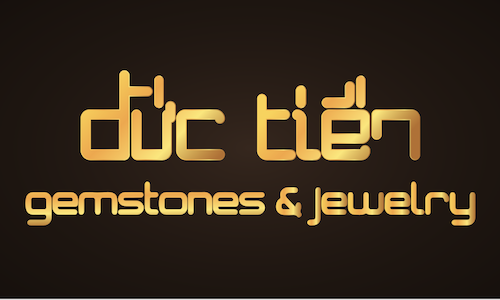Jewelry appeared in human life from prehistoric times about 80,000 years ago and so we can see that the origin of jewelry history is when people appeared and accompanied with the development of the commune. human society.
Before the appearance of the dress culture, people knew how to beautify with jewelry. The first jewelry materials are those available in nature such as seashells, snail shells, fur, animal teeth, animal bones, wood, stone …
The first seashell jewelry was made by Homo Spaniens (Africa) dating back to the stone 80,000 years ago and discovered in the Blombos cave (South Africa). Natural jewelry was widely popularized in the period like the Cro-Magnons (of the Homo Spaniens strain) migrated from the Middle East to Europe more than 40,000 years ago, they created many styles such as necklaces, bracelets …
 |
The seashells and snail shells were perforated by ancient people to string them together. |
In addition to the function of beauty jewelry, it also shows wealth, power, and also has spiritual meaning. Human ancestors believed that wearing jewelry helped fight dangers, prevent evil, help cure illness and bring happiness to the wearer.
 |
Chain with snail shells of the ancient Vietnamese in Dong Son culture. |
 |
Ancient people who followed the materialism often wore jewelry made from animals with the belief that they wanted the superior attributes of animals (agility, wisdom, mighty, hidden …) to be transmitted to them. the wearer’s body. (American Indian jewelry). |
 |
Tribes used jewelry to distinguish the status of its wearer. Jewelry of tribal leader Mario (New Zealand) buns with a hair comb and feathers on the hair. |
 |
Ancient Indonesian people made beauty with pig teeth, flat or twisted on both sides of the nose. |
 |
Sara Kaba (Africa) with the custom of attaching jewelry on the lips. |
 |
Jewelry is almost worn in every part of the body with many different materials (Borneo people in Asia). |
 |
Jewelry of the Dabomey tribe (Africa). |
 |
Gemstones carved the faces of the gods were worn by Aboriginal Mesoamerica in the ceremonies. |
 |
Ancient Vietnamese stone earrings in the Dong Son culture period. |
About 7,000 years ago, humans forged copper alloys, marking the birth of metal jewelry.
 |
The Kayan (Burmese) wear brass rings on their necks to distinguish gender. | ||
 |
Ring, ring, and earrings jewelry made by the ancient Vietnamese people in the Dong Son culture period. | ||
|
The warrior’s costume, gloves, and belt keychains in ancient times. |
Egypt is the country that enlightened the line of jewelry, gold, silver and precious stones. Around 3,500 – 3,000 BC, when the Egyptians could melt gold to laminated and shaped, gold jewelry was also born. Since then, gold has always been the most popular metal in jewelry artistry because of its warm color, shiny appearance and durability. And the Egyptians chose the gold ring as the symbol of marriage because the yellow color represents the sun representing a supernatural force and a circle with no end to show eternal love.
Along with the development of increasingly sophisticated and sophisticated jewelry crafting techniques, in addition to gold jewelry, the ancient Egyptians also knew to create many new materials such as silver, aluminum, synthetic glass … and especially techniques. The sophisticated gemstone football cutting technique has given birth to the gemstone jewelry line.
Ancient Egypt had six colors used in gem jewelry: Yellow (Gold) represents the sun, which shows the power to last; Red (Carnelian) represents life and victory; Blue (Lapis lazuli) represents heaven and water expressing power to dominate and revive; Green (Emerald) represents vitality and rejuvenation; White (Silver) has a spiritual meaning often used in church objects; Black symbolizes death and destruction.
Jewelry, jewelry, beauty, and power, at the same time bring luck, help prevent disease, improve health, rejuvenate …
Jewelry is not only for the living, but the ancients believe that burying many treasures with the dead will help maintain wealth, power and beauty when revived. Treasure most buried in the Pharaonic dynasties (Egypt).
 |
 |
 |
 |
Crown jewelry, locket, rings of gold, copper, and precious stones were buried under the tombs of the Pharaonic kings (Egypt).
 |
 |
 |
Gold jewelry, scorpion-shaped gemstones (symbol of the Pharaonic dynasty of Egypt) in the form of locket, ring, mark showing the power to revive the immortality of its user.
 |
 |
 |
Gold jewelry, vulture gemstones (symbol of the creator of man in Egypt) crown, locket, ring represent prosperity, success and power of its wearer. Usually Egyptian queens wear this symbol.
 |
Gold jewelry, snake-shaped gemstones (the Egyptian mascot symbol) in the form of a crown show the strength to fight and easily deceive the enemy. |
 |
Gold jewelry, eye-shaped gemstones (symbol of the eye of Horus Egypt) in locket form bring safety, health, wisdom and prosperity to the wearer. |
 |
Beaded jewelry is a symbol of the amulet. Red opal jewelry (color of life and victory), ivory engraved with birds and fish (ancient Egyptian mascot) to suppress evil while demonstrating vitality and belief in battle. wins. |
 |
In ancient Egypt, pregnant women and children always wore locket with the god Bes to keep them safe during childbirth and protect children from the threat of bad gods. |
 |
Jewelry not only brings good things to the living but also for the dead. The dead are usually brought with a Djed locket (the spine of the dead god Osiris) green to be quickly revived. |
 |
Queen Cleopatra always wears an Emerald green jewel to keep her youthful beauty. |
 |
Ancient Vietnamese people wore silver jewelry as an amulet to keep the soul, keep the wind, and keep away evil spirits. |
Color has an important meaning in Egyptian jewelry. The Egyptians used only limited types of gold and silver gems of six basic colors: red, blue, green, yellow, white and black. In general, Egyptian jewelry shows wealth and power, so it is often large, heavy, and raw. Meanwhile, jewelry in the Mesopotamian region (Central Asia, 2400-2600 BC) was thinner and often thin gold leaves associated with many gems. The Assyrians (Iraq) often wear necklaces, gems and especially amulets to protect the living and the deceased.
 |
 |
Ancient Greece did not know how to use gold until 1400 BC and did not know gems until 300 BC. Since the fall of Troy, Greek jewelry is rich and varied, reflecting the prosperity of the society at that time. Delicate, light gold jewelry with designs inspired by nature such as flowers, animals and bezel rings to attach gems.
 |
Ancient Greece (2000 years ago) created a golden laurel wreath to reward the victorious hero. |
 |
Gold earrings in the form of doves, god Eros (god of love), god Nike (god of victory) are souvenirs for men to give their lovers before the battle with the message of quickly bringing the good news of war. wins and at the same time shows passionate love for her lover. |
Roman jewelry was influenced by ancient Egypt and has a resemblance to ancient Greece. The ancient Romans wore earrings, locket and rings and also wore charms to prevent evil.

By 300 BC the ancient Roman jewelry line with the tendency to carve figures of animals, gods, kings and pearls was the preferred gemstone in jewelry. Men began to reduce their wear of many different types of jewelry and eventually used only ring jewelry.
 |
 |
Into the Middle Ages (5th – 15th century) due to the fall of the Roman Empire accompanied by an outbreak of disease that degenerated Europe. For ten centuries people lived in oppression, fear, and despair. The use of jewelry was not welcomed by society, except for the aristocracy, where very few people wore jewelry. Jewelry in this period tends to attach gems that are meant to detoxify, heal, and fight evil. The mascot symbols such as dragons, snakes, toads, cupid, the wings of Mercury, and the god of beauty (Venus) are worn with the belief that they want to bring a good future.
 |
 |
 |
 |
The advent of Christianity gave birth to the typical medieval line of religious jewelry. Jewelry engraved with crosses, triads, curls, wavelengths … started to gain popularity during this period.
 |
The Romans wore a ring with a marble to protect their health |
 |
The Celtic Cross of Christianity represents a worldview of air, earth, fire and water. |
 |
Celtic Knot interlocking jewelry symbolizes friendship, lasting love and also a connection to everything in life. |
 |
Trinity Knot represents the rotation of the seasons, the reincarnation of life, death and resurrection. |
 |
Amber prevailed during this period because the Christian religion believed that amber imbued with magical power kept its owner safe and brought many feats, so it was very popular with cavalry and hunters. |
 |
Gem Garnet is the mascot symbol of Christianity. During the Great Flood, Noah hung Garnet on the boat for 40 days and nights to illuminate the way to the new world. |
Switching to the Renaissance period (15th to early 17th century) until today, jewelry has reached the level of perfection. Through the dark period (medieval period), the society gradually stabilized, people lived in peace and escaped from wars and epidemics, so a line of jewelry appeared to show peace, freshness and purity. Most typical in England in the Victorian era with Victorian jewelry line (1837-1901). The characteristic of this jewelry line is jewelry in the form of hairpin, hairpin and shirt, locket, ring … engraved with serpent, bunch of grapes, flowers, birds, simulating the image of a paradise garden, symbolizing the pure, gentle and diamond are the most valuable gemstones in British jewelry. The hair brooch and quartz locket that are characteristic of the Scottish line of jewelry are also popular.
 |
This peaceful (17th century) gold ring features a roof shape. |
 |
 |
 |
 |
At the same time in France also appeared a new line of jewelry (Art Nouveau) in the form of birds, flowers, butterflies, dragons, mermaids or delicate faces of women and men.
 |
 |
 |
 |
 |
Entering the 19th century, the scientific and technical revolution has transformed jewelry design according to the artistic trend (Art Deco). Gemstones are cut in many sophisticated and eye-catching styles such as emerald cut, triangle, pentagon, trapezoid … and especially popular using bright-colored metals such as silver, white gold, platinum in jewelry. . It was the advent of white gold that created contrasting lines of jewelry. It is a creative combination of gold and white gold on the same jewelry or a combination of black and white gemstones or light stones with dark stones that are characteristic of Art Deco jewelry.
 |
 |
 |
 |
 |
 |
 |
 |
The development of science and technology has enriched many new cutting styles of gemstones, metals and synthetic stones. Nowadays, people wear jewelry mostly for beauty, so they tend to choose artistic jewelry, in addition, many people wear jewelry to show their religion, status, wealth and spirituality according to the trend. wear gemstones according to feng shui. Based on the month of birth, age (network) combined with occupation and gender will choose to wear the right gemstone jewelry to achieve what you want.











